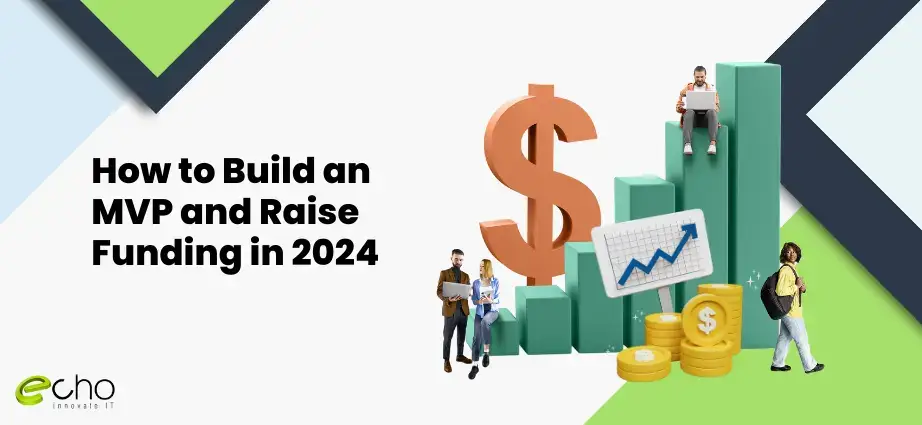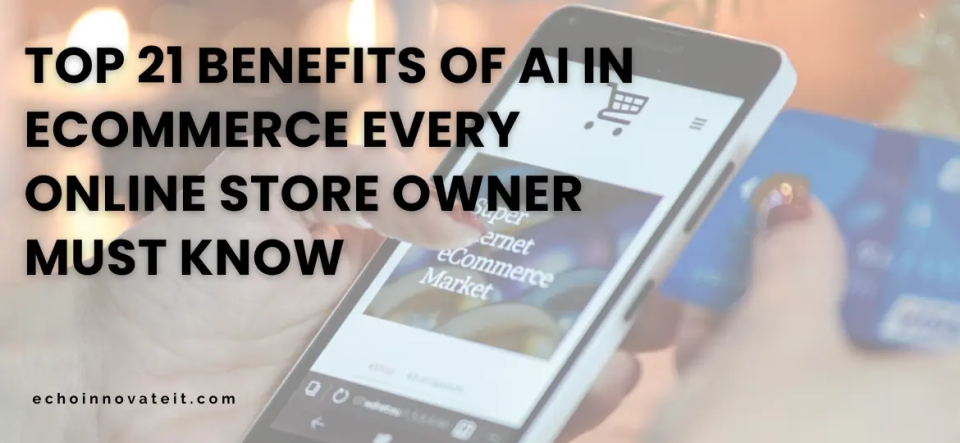MVP development is one of the most crucial steps for businesses and startups to ensure their product stay ahead in the competitive arena. Companies can reduce the risk of investing considerable resources in a product that does not resonate with the market by launching a minimum viable product with few features. This strategy helps to conserve capital and avoid costly blunders.
However, getting funds in 2024 poses distinct problems for entrepreneurs. The competitive market, economic uncertainty, and rising investor expectations have made raising capital more challenging than ever. Investors are looking for firms with significant growth potential, a clear value proposition, and a track record of traction. In this situation, creating a compelling MVP is even more important. A well-crafted MVP can demonstrate a startup’s capacity to execute, attract early users, and create money, making it an effective tool for attracting investors and raising funds.
In today’s blog, we will learn how to build an MVP app and design a product that meets customer needs. You’ll also gain strategies to raise funding for your MVP and find investors to get started. So, without wasting time, let’s get started!
Understanding MVP & It’s Core Features
MVP, or Minimum Viable Product, is a simplified form of a product or service that enables startups to test their idea in the market with little investment. It’s intended to give just enough functionality to entice early users and solicit useful feedback.
The purpose of an MVP is not to develop a perfect product but rather to test the core concept and highlight areas for improvement before investing major resources. Startups can save time and money on development by focusing on critical functionality and removing extraneous elements. The key features of an MVP are mentioned below:
- Fundamental Features: The MVP should concentrate on the essential aspects that address the primary issue or requirement. This helps to expedite development and ensures that the product meets the most important needs.
- Target Population: Determine which specific group of clients the MVP is intended to target. This will assist in adapting the features and messaging to their particular requirements and interests.
- Value Proposition: Clearly identify the distinct value that the MVP provides to its clients. This will help to set the product apart from competitors and attract early adopters.
- Learning Objectives: Determine the precise insights and data you want to learn from the MVP. This will allow you to measure the product’s success and identify areas for improvement.
- Iterative Development: MVPs are meant to be iterated based on user feedback. This enables companies to continuously enhance their products and ensure that they satisfy the changing needs of the market.
Also Check:
Top Benefits of Developing An MVP
There are various benefits when you develop an MVP for entrepreneurs, including lower risk, faster time to market, useful user input, iterative development, higher investor interest, and better product-market fit. Startups may improve their chances of success and create long-term enterprises by embracing the potential of MVPs.
Lower Risk
Startups can decrease the financial risk of building a full-fledged product that may not appeal to the market by introducing an MVP with a reduced feature set. By soliciting input early on, companies can discover and address possible flaws before investing major resources in a product that does not satisfy customer expectations.
Reduced Time to Market
MVPs enable startups to deploy their products more quickly, giving them a competitive advantage and reaching customers faster. Startups can position themselves as early leaders and increase brand recognition by being among the first to debut a product in a specific market.
Valuable Customer Feedback
MVPs give entrepreneurs an excellent chance to receive direct feedback from customers, allowing them to understand their preferences, wants, and problem areas better. By studying client feedback, entrepreneurs can make more informed judgments about product features, pricing, and marketing tactics.
Iterative Development
MVPs encourage iterative development, allowing startups to modify and improve their products based on consumer input constantly. Startups that are agile and responsive to market developments can stay relevant and ahead of the competition.
Attracts investors
A successful MVP can demonstrate that a startup’s concept has market potential, increasing its appeal to investors. Startups can improve their prospects of receiving funding for future development and growth by demonstrating early traction and client engagement.
Improved product-market fit
MVPs assist startups in discovering whether their product meets market demand and consumer needs. Startups can improve their product’s fit with their target market by obtaining feedback and making required improvements.
Simple Steps to Develop an MVP for Your Business
The basic goal of creating an MVP is to test your concept in the market with minimal investment. It involves validating your ideas, gathering customer feedback and iterating quickly. Below are the simple steps for how to create an MVP App for your business:
Create your MVP goals
The first step in creating an MVP is to describe your aims precisely. This entails identifying the primary problem that your MVP seeks to tackle and creating clear goals for what you hope to accomplish. Clearly define the problem that your MVP wants to solve. Determine your objectives for the MVP, such as proving market demand, getting consumer input, or testing a specific feature.
Determine Your Target Audience
After you’ve set your MVP objectives, the next step is to determine your target audience. Understanding your prospective customer’s characteristics, needs, and pain areas is essential. After you’ve set your MVP objectives, the next step is to determine your target audience. Understanding your prospective customer’s characteristics, needs, and pain areas is essential.
Prioritize Features
After defining your MVP goals and identifying your target audience, prioritize the elements that will be included in your MVP. Determine which features are necessary for solving the core problem and achieving your MVP objectives. These features should address your target audience’s specific wants and pain concerns. Rank the features based on their importance and contribution to your MVP’s value proposition. Concentrate on the features that will bring the greatest value to your clients.
Selecting a Development Methodology
After you’ve prioritized your features, choose a development technique. Agile and Lean Startup are both popular options. Agile approaches, such as Scrum and Kanban, prioritize flexibility and adaptation. They allow you to change your plans in response to shifting requirements or comments.
Agile methodologies divide development into smaller iterations or sprints, allowing you to produce working bits of your product quickly. Agile approaches emphasize continual improvement by providing regular feedback and retrospectives.
Design and Develop your MVP
Once you’ve decided on a development technique, it’s time to design and build your MVP. Design your user interface with your intended audience in mind. Consider their tastes, requirements, and expectations. Avoid cluttering your UI with needless features. Concentrate on creating a clear and intuitive experience. Make sure your design is consistent throughout the product and easy for consumers to navigate. Consider designing for mobile devices first, as mobile usage is fast growing.
Test And Validate
Once your MVP is complete, it is time to test and validate it. This entails getting feedback from actual users and measuring key performance indicators (KPIs) to determine the MVP’s success. Find people that represent your target demographic and invite them to test your MVP. Examine how users interact with your product to uncover any issues or areas of misunderstanding.
Request that consumers provide their impressions, suggestions, and feedback on the product’s features and usefulness. Conduct in-depth interviews with users to gain a better understanding of their perspectives and experiences.
Repeat and Improve
Once you’ve acquired user feedback and measured critical metrics, it’s time to assess the results and make the necessary changes. Examine the feedback you’ve gotten from users, paying special attention to repeating themes and common pain issues. Determine which aspects of your MVP should be updated or improved based on user feedback. Rank the essential adjustments according to their influence on user experience and business objectives.
How to Look For Investors to Raise Funding on Your MVP
After you’ve successfully created and proven your MVP, the next critical step is to get finance to expand your firm. Attracting investors necessitates a systematic approach that includes knowing their needs, cultivating strong relationships, and successfully communicating your MVP’s value proposition. By taking the below-mentioned steps and developing solid relationships, you can improve your chances of obtaining the money required to scale your business. Read them out:
Define your funding requirements
Determine how much financing you need and what kind of investment you want (e.g., seed, venture capital, angel investment). Understand the terms and conditions that come with different sources of funding.
Create a Strong Pitch Deck
Make a persuasive pitch deck outlining your MVP’s value proposition, market potential, and financial predictions. Focus on stories and images to entice investors. Practice your pitch to build confidence and clarity.
Network and Develop Relationships
Attend industry events, conferences, and meetups to network with potential investors. Use internet platforms and social media to grow your network. Develop ties with mentors, advisors, and other business owners who can offer advice and introductions.
Utilize Digital Platforms
Investigate internet portals built particularly to link companies with investors, such as AngelList, Crunchbase, and Gust. Create a profile on these platforms to promote your MVP and pique investor interest.
Make the Most of Your Network
Reach out to your personal and professional networks to find new investors.
Ask for references and introductions to people who could be interested in your MVP.
Identify investors who have previously invested in startups comparable to yours. Research their investing criteria and interests to personalize your approach.
Maintain Persistence and Patience
Fundraising can be time-consuming. Maintain persistence and patience in your quest for investors. Prepare to confront rejection and learn from every event.
Consider Crowdfunding
If you need help attracting traditional investors, consider using crowdfunding platforms such as Kickstarter or Indiegogo to gather funds directly from the general public.
Also Check:
Conclusion
Top MVP development and getting funding require a deliberate and focused strategy. Following the important procedures indicated in this blog post will boost your chances of success. Remember that starting a successful business involves tenacity, adaptability, and a strong belief in your idea. Prepare to encounter trials, disappointments, and rejection. Stay focused on your goals, be adaptable, and never give up on your vision.
By taking these actions and keeping a good attitude, you may overcome hurdles and develop a thriving business. Echoinnovate IT, a leading software app development firm provides full services to help you create a strong MVP for your business. With our knowledge and experience, we can walk you through the full process, from concept to launch. Collaborate with us to accelerate your speed to market, validate your business concept, and attract possible investors. Our knowledge and dedication to perfection will assist you in developing a successful MVP that distinguishes your organization.
FAQs
What is an MVP and why is it important for startups in 2024?
An MVP, or Minimum Viable Product, is a simplified version of a product that includes only the essential features necessary to meet the needs of early adopters. In 2024, building an MVP is crucial as it allows startups to test their ideas with minimal investment, gather feedback, and make improvements before seeking significant funding.
How can I effectively build an MVP in 2024?
To effectively build an MVP in 2024, start by identifying your core value proposition and essential features. Use agile development methods to create a prototype quickly and gather user feedback. Utilize modern tools and platforms that streamline development and keep costs low.
What are the key strategies for raising funding for an MVP in 2024?
Key strategies for raising funding include developing a clear business plan, demonstrating early traction or validation, and leveraging networks and pitch events. Focus on showing how your MVP addresses a real problem and has potential for growth. Additionally, consider exploring various funding options such as angel investors, venture capital, and crowdfunding platforms.



